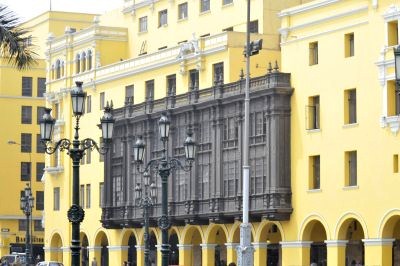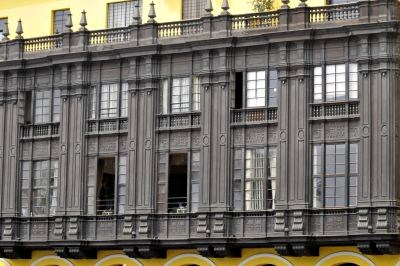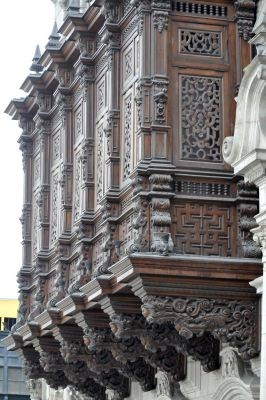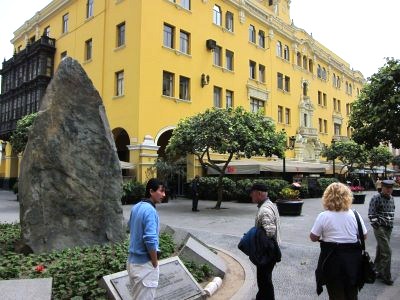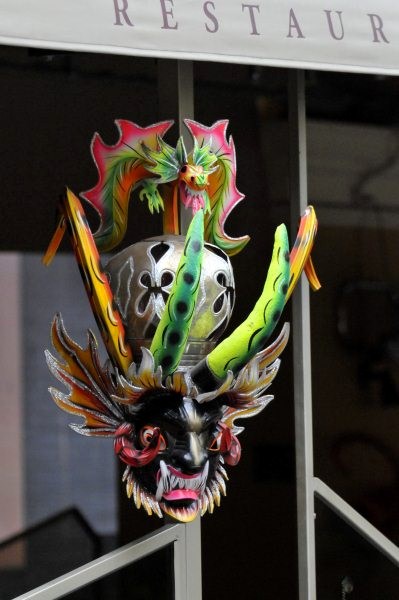Plaza de Armas

|
Plaza de Armas of Lima
Plaza de Armas of Lima, is the birthplace and core of the city of Lima. In 1821, José de San Martín proclaimed the Independence of Peru on this plaza. After this historic event, the flag of the new republic was paraded around the plaza. Located in the Historic Centre of Lima, it is surrounded by the Government Palace, Cathedral of Lima, Archbishop's Palace of Lima construction completed in 1922, with it's very famous and beautiful balcony, the Municipal Palace and the Palace of the Union. The Plaza de Armas is surrounded by the Jiron Junin, Jiron de la Union, Jiron Huallaga, and the Jiron Carabaja avenues.

In 1938, the Government
Palace was completed and in 1944 the Municipal Palace
was completed. In 1523, King Charles I of Spain mandated the procedures for the creation of cities in the New World. These procedures indicated that after outlining a city's plan, growth should follow a grid centered on the square shape of the plaza. On the day of the foundation of the city, the 18th of January 1535, the conquistador Francisco Pizarro, conforming to established procedure, designated a location to build the plaza. Later, Pizarro and Nicolas de Rivera, the city's first mayor, toured the city's location and split parcels. Pizarro, taking advantage of his title of founder and governor, took a large parcel of land between the north side of the plaza and the River Rimac. The lot to the south of the plaza was designated to be a church, the western lot was to be the site of a city council, and the rest of the lots were divided among the rest of the conquistadors.   The 17th century historian Bernabé Cobo said of the plaza: ..."it is the finest and most well-formed [plaza] that I have ever seen, even in Spain. It occupies an entire block, with the width of four streets on one side and four streets on the other, and with all four sides it measures more than two thousand feet; it is very flat..." Subsequently, the viceroy Diego López de Zúñiga y Velasco, count of Nieva, proposed the gallows, which had previously been located at the centre of the plaza, be moved nearer to the river to the location which is now the Desamparados train station. In place of it, a new water fountain was built at the centre of the plaza. The gallows were returned to the south side of the plaza on the Callejon de Petateros.
 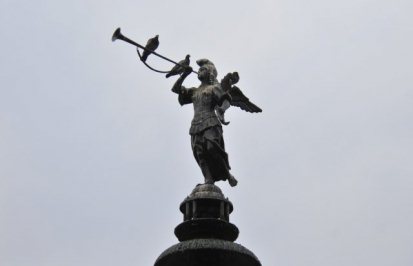 The first water fountain built on the plaza was constructed by the viceroy Francisco de Toledo, and was inaugurated on the 21st of October 1578, sadly being cleaned the day we visited, pigeons looked down from the top. It consisted of a baluster and an elevated bowl, and in it had eight pipes through which water fell into the bowl on the next level. A ball at the top of the fountain dispersed water back onto the lower levels. The seal of the city was inscribed on this ball. The water fountain was replaced in by the viceroy García Sarmiento de Sotomayor, count of Salvatierra, who inaugurated it on the 8th of September 1651. This fountain remains as the centerpiece of the plaza to this day.
 During the colonial era, the plaza served as a market, bull fighting ring and the city gallows. The plaza also became home to the Auto de fe in which the inquisition occurred. The tribunal of the inquisition had one of its three courts located in Lima. The first conviction occurred on the 15th of November 1573 and this was the first heretic to be tried and executed in the new world.

In 1622, the Cathedral of Lima was completed
Over the main entrance, this original
cathedral still stands today on the plaza. Bishops Palace seen to the
left.
 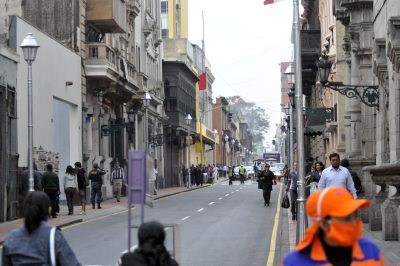 In 1855, President Ramón Castilla inaugurated the first public gas lighting system which were first installed on the light posts of the plaza. As we explored the side streets we saw beautiful gas wall lamps and the stunning balconies. Also at this time, gardens were planted on the plaza as up until this time it was made of pavement. In 1860, the first railways for trams were installed on the plaza.
 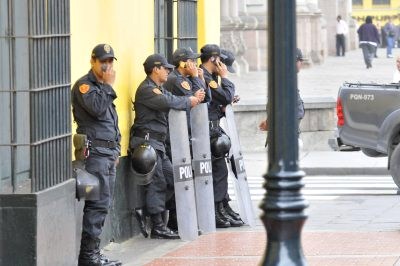
Smart uniforms on the Palace Musicians and fierce looking policemen who guard the Plaza
Our guide showing us the Wanka en Grandodiorita celebrating native beginnings. The literary richness of the city
A crisp window adornment in one of
the many chic restaurants
ALL IN ALL A CITY TOUR WE HAD LOOKED
FORWARD TO
AS ALWAYS MUCH MORE TIME NEEDED TO TAKE IT ALL
IN
|
